Bold and bright, ornamental-looking foliage is the true hallmark of a Fittonia plant.
Though they come in many distinct colors and flavors, their characteristic striking venation always comes through strong. Giving rise to the (equally fitting) common names, the Nerve Plant and the Mosaic Plant.
Seriously, whether you want a pretty little potted number for your desk or a pop of color in a terrarium – Fittonia is a versatile choice.
There’s a lot on offer here, and there’s sure to be a variety that suits your needs.
In this guide, you’ll find out how to keep this popular tropical plant happy (despite its dramatic tendencies) and keep those vibrant leaves looking their best.
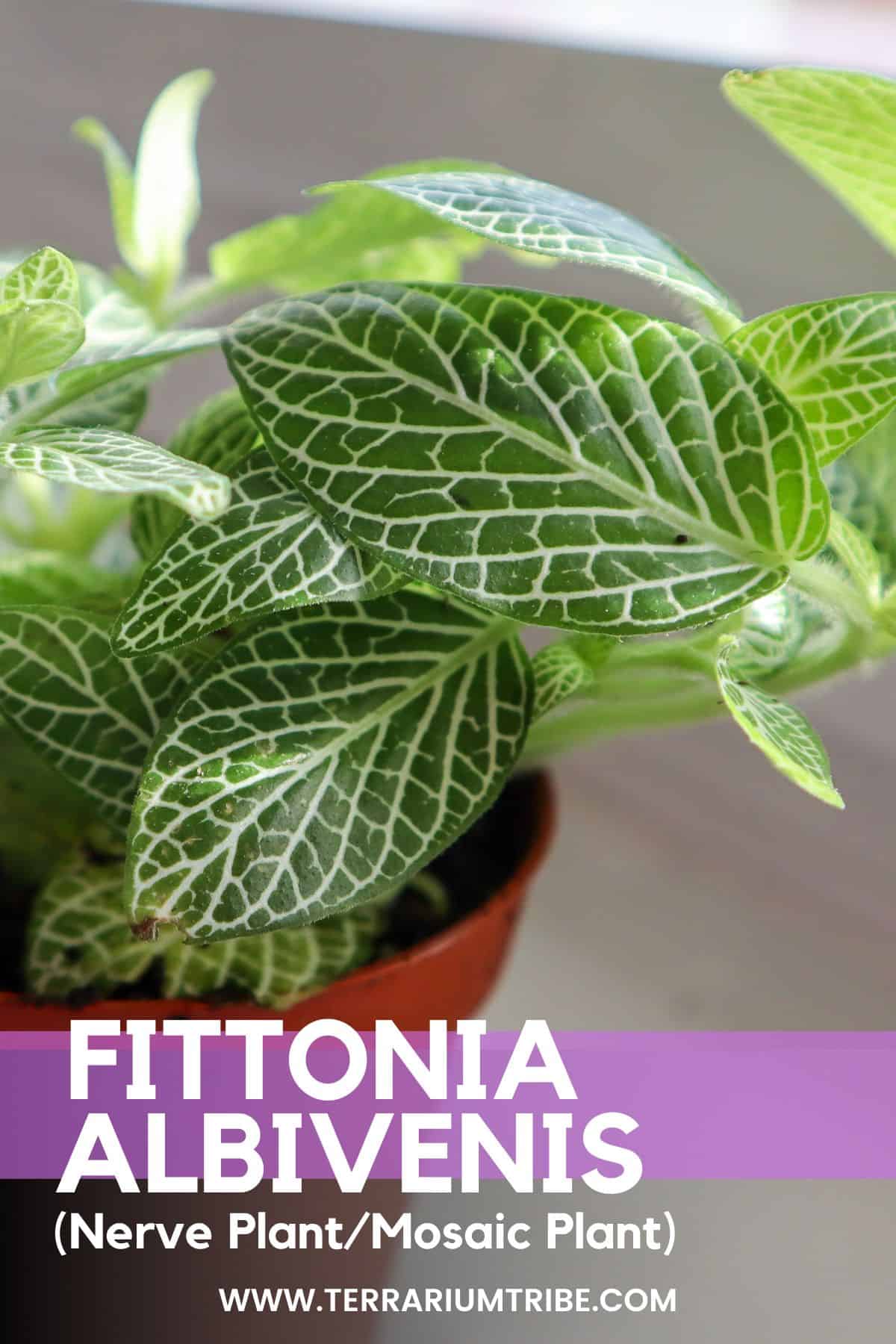
Where to Buy Nerve Plants
See the links below to purchase from reputable terrarium plant shops and marketplaces (may include affiliate links).
Fittonia Care & Growth
| Plant Type | Foliage |
| Lighting | Bright, indirect light |
| Temperature | 60-80°F (15-26°C) |
| Watering | Regular, even moisture |
| Humidity | High humidity (60-90%) |
| Growth | 3-6 inches |
Fittonia Lighting Requirements ☀️
Hailing from the rainforest floors of Peru, Nerve Plants are natural shade lovers.
They’ll do best in bright, indirect light conditions (the kind that recreates the dappled sunlight peaking through the canopy).
This means that Fittonia can handle low light conditions pretty well, and that makes them an excellent fit for bathrooms, corridors, and other shadier corners.
However, if they go with insufficient lighting for too long, you risk losing some of that leafy vibrancy.
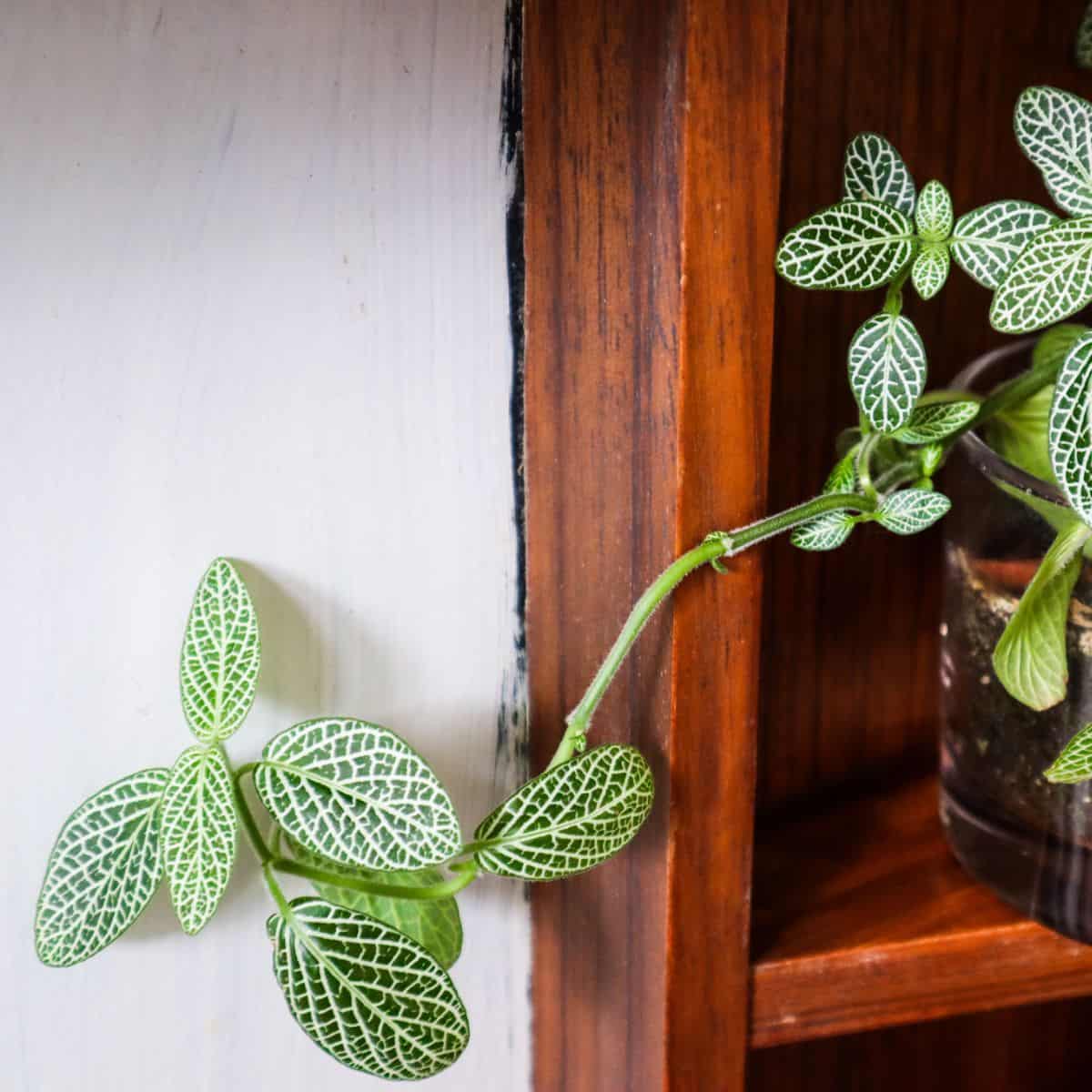
On the flip side, they’ll quickly burn in direct sunlight – so that’s a big no too.
An ideal spot in the home would be a North-facing window. There they’ll get consistently soft indirect lighting throughout the day, so there’s never a risk of leaf damage.
Alternatively, you can employ fluorescent grow lights (as I do with my plants in the winter) to maximize their lighting with none of the risks.

Watering Fittonia
As a tropical plant, Fittonia likes constant moisture.
In fact, it’s quite the diva about it.
She’ll demand a minimum level of moisture, and she’ll dramatically faint if she doesn’t get it. Literally, the stems and leaves completely collapse… it’s equally worrying and amusing.
But don’t fret; she will quickly rebound once she’s watered!

If the leaves of your Fittonia are curling, dropping, or looking crispy, then you’re likely to be underwatering your plant.
The key to avoiding this isn’t regular misting (seriously, that’s a losing battle). Instead, it’s about maximizing water retention and balancing drainage in your substrate.
Or foregoing the substrate altogether and growing them in water. It can be done, and Fittonia are actually quite commonly grown emersed in ripariums for this reason.
Naturally, keeping them in a tropical terrarium is obviously the perfect solution to all of these issues (but I may be biased).
Substrate / Soil Options
Fittonia should grow happily in any substrate that’s suitable for tropical plants.
As we’ve touched on, that means a substrate that retains moisture well but also has plenty of drainage.
Honestly, any coco-coir-based mix with some drainage-promoting soil amendments (e.g., orchid bark, pumice) should do great. Anything you can add to maximize water retention will be appreciated, too.
👉 Check out our signature terrarium substrate mix – it’s a natural fit.
Temperature & Humidity
As you might imagine from a plant from the tropics of South America, Nerve Plants love high temperatures and humidity levels.
So, these beautiful plants can be pretty sensitive to it.

They can absolutely be grown as an indoor plant under the right conditions, but you’ll want to maintain at least 50% humidity (another pro for the bathroom placement) and a comfortable room temperature.
How to do this easily? Put them in a Fittonia terrarium!
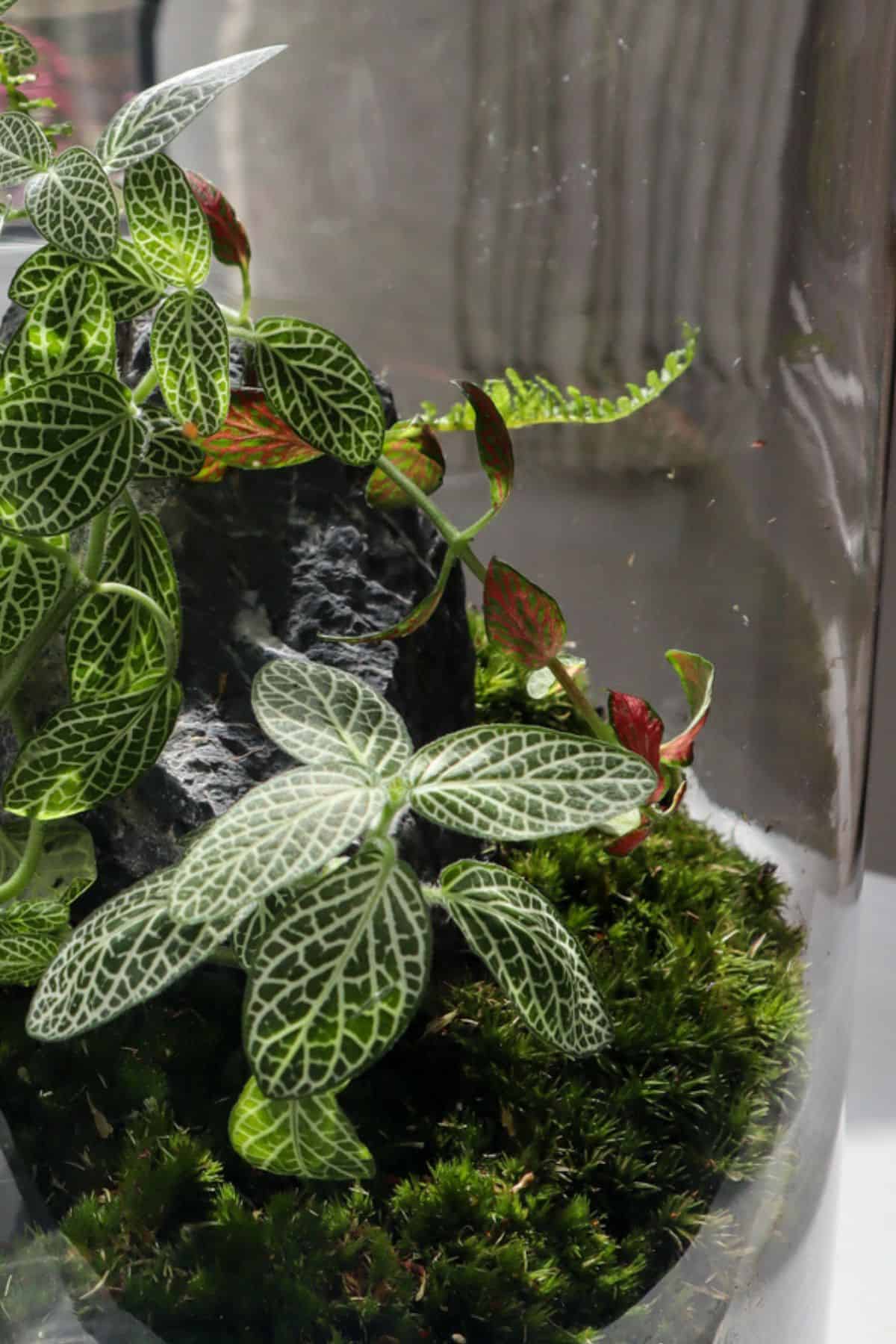
Growth
These spreading evergreens make a great ground cover plant in a terrarium.
That said, their bushy nature also lends itself well to filling out a plant pot or hanging basket/planter. Under the right conditions, they can form quite a dense set of foliage.
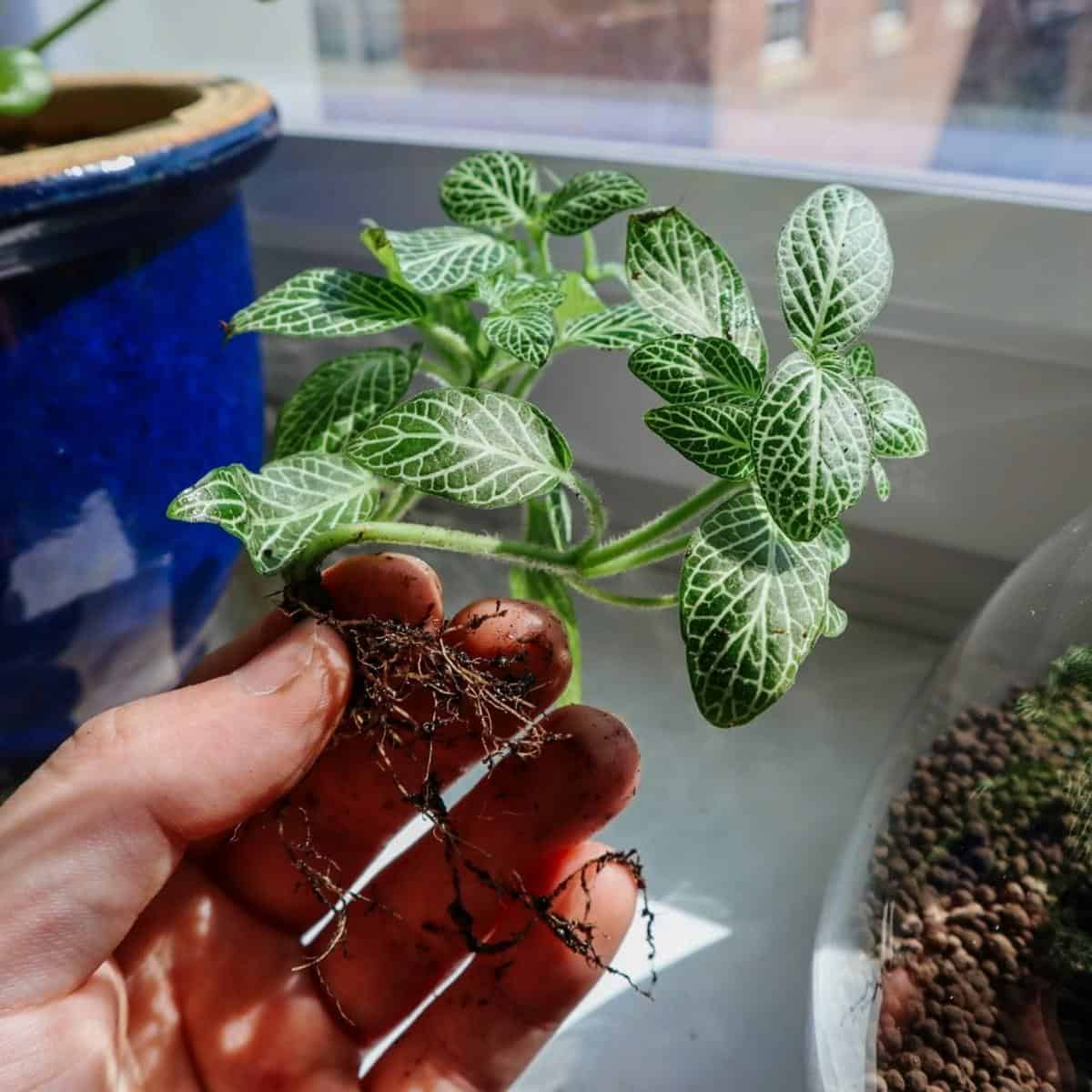
Pinching the stems back is the best way to make a Fittonia bushy.
Simply remove the top section of the stem, just above the leaf node. That’ll encourage the plant to direct its energy into horizontal growth.
How about the flowers – do nerve plants bloom? (and are they as beautiful as the leaves)?
Yes… and no. As with most plants, the more dramatic the foliage, the more subtle the flowers. In fact, it’s common to simply cut off any blooms to force the plant into directing its energy into its leaves.

How Do You Propagate Fittonia?
Fittonia can be easily propagated from stem cuttings.
Just make sure to snip a healthy node with a few leaves to give it a good chance.
I’ve also seen people suggesting you can propagate them from just a leaf, but I think most cuttings would struggle. Might be worth a go if you’ve given your plant a snip and have some spare, but if you want some new Nerve Plant babies, then stem cuttings are the way to go.
These can be dropped into water, and they should root up nicely in just a few weeks.

Stunning Fittonia Varieties (& Similar Plants)
We’re blessed with a huge range of beautiful Fittonia varieties these days.
From lovely lime green leaves to vivid reds and pinks.
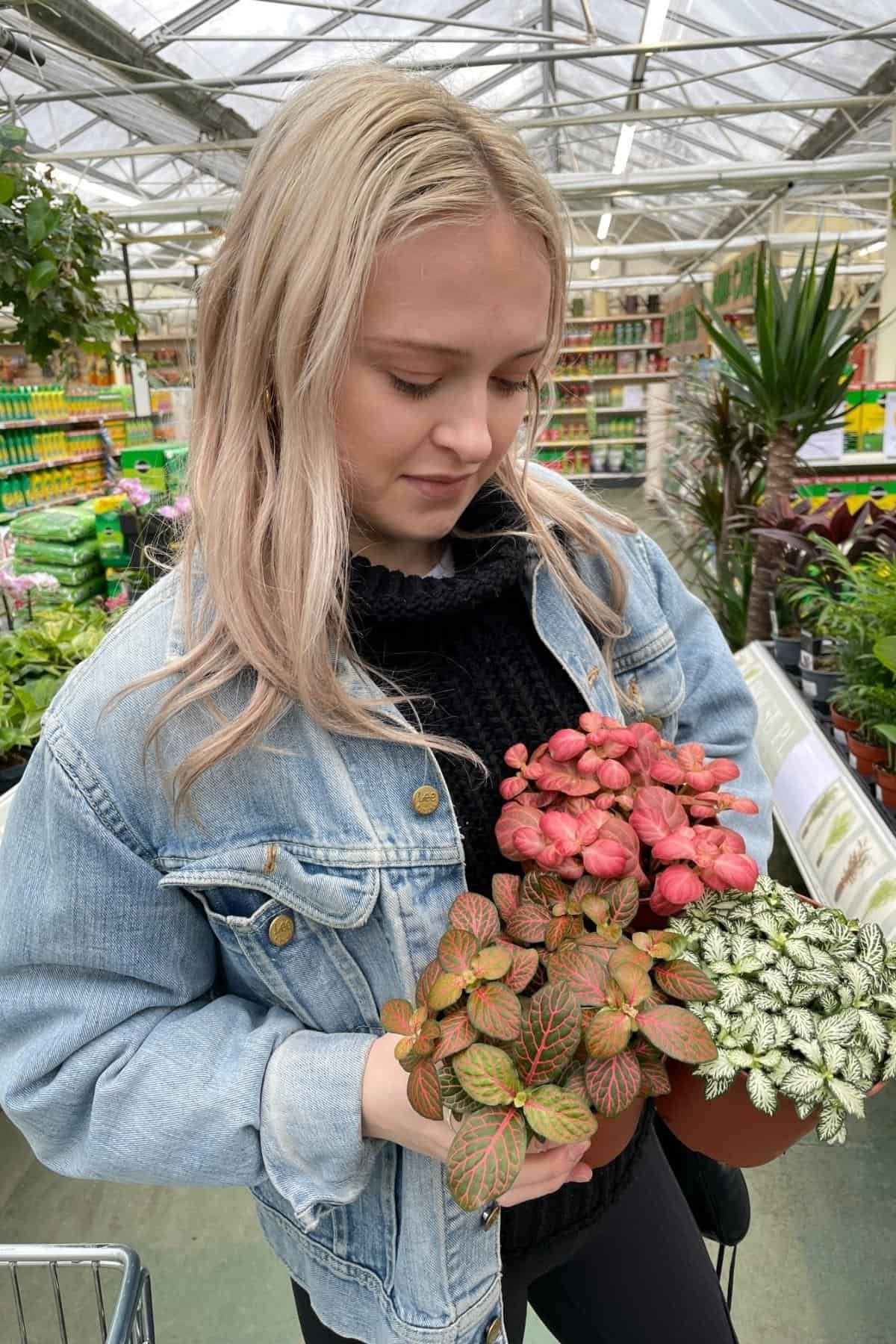
Though, despite the many colors and patterns on offer in stores, pretty much all of them belong to the same species – Fittonia albivenis.
“Albivenis” actually translates to “white veins,” so it’s a fitting name!
Within F. albivenis, there are two main groups: Verschaffeltii and Argyroneura.
Though many sources seem to confuse these as different plants (i.e., separate species), they’re actually just different groups of cultivars. Designed to express the biggest range of colors and patterns but with largely the same care requirements.
Look out for the “Minima” variety if you’re looking to plant a very small terrarium.
On the flip side, there’s also the Fittonia gigantea. As the larger (and arguably rarer) species, it doesn’t see much use in the home or in terrariums, but maybe it should!
Alternatively, the Polka Dot Plant can provide some color and character aplenty with its wide variety of spotted foliage.
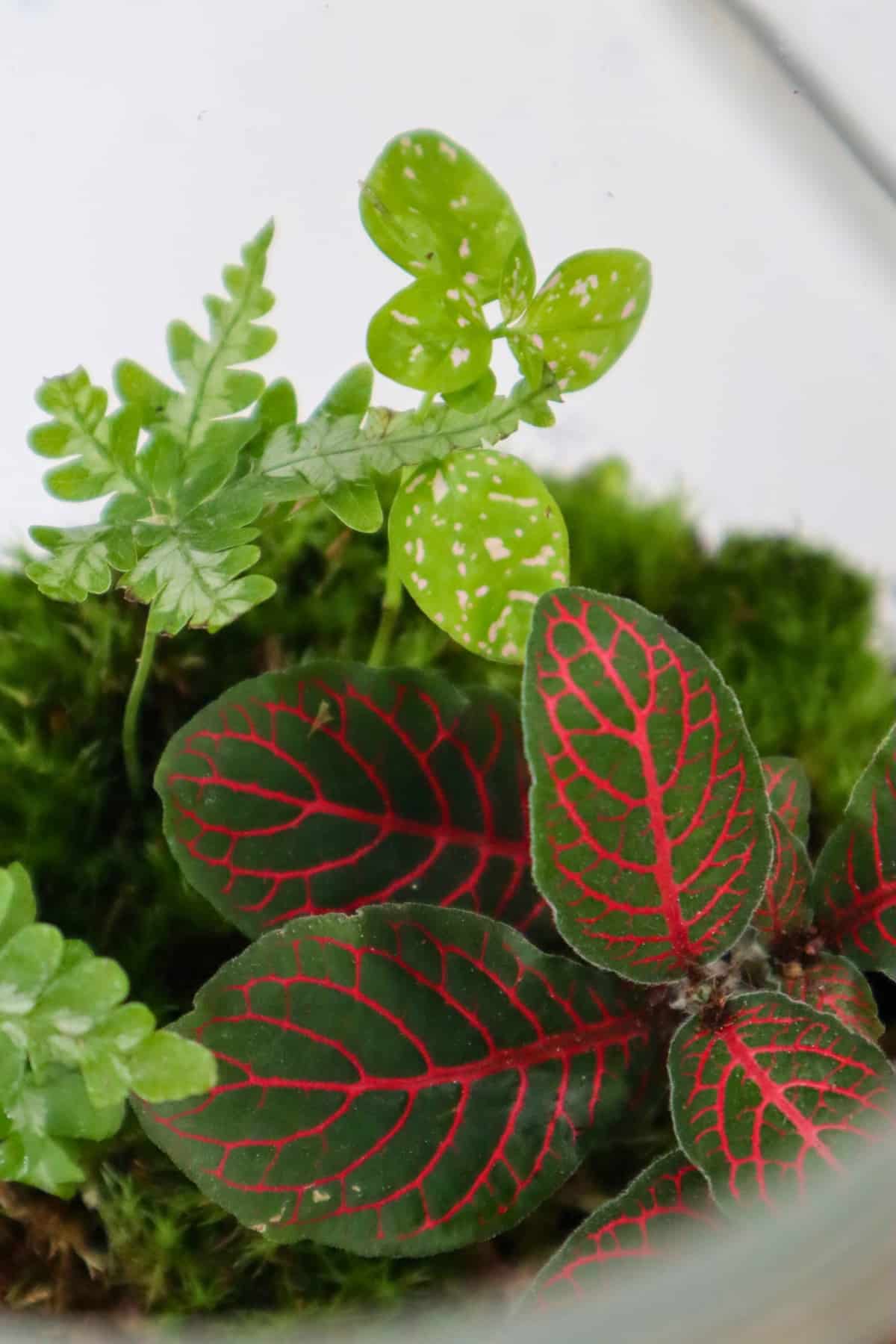
Frequently Asked Questions
Fittonia are completely non-toxic according to the ASPCA. So they’re perfectly safe to keep in households with children and pets.
Their high humidity and moisture requirements make Fittonia great for terrariums. Though they’re also commonly used as houseplants and as filler plants in hanging baskets.
Matching its native tropical conditions can make Fittonia hard to care for as a houseplant, but they’re easy to grow in a terrarium.
